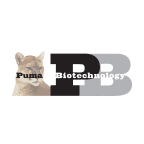
FMP

Puma Biotechnology, Inc.
PBYI
NASDAQ
Puma Biotechnology, Inc., a biopharmaceutical company, focuses on the development and commercialization of products to enhance cancer care in the United States and internationally. The company's drug candidates include PB272 neratinib (oral) for the patients with early stage HER2-overexpressed/amplified breast cancer; PB272 (neratinib, oral) for the use of neratinib in combination with capecitabine for the treatment of adult patients with advanced or metastatic HER2-positive breast cancer; PB272 (neratinib, oral) for HER2 mutation-positive solid tumors. It has a license agreement with Pfizer, Inc.; and sub-license agreement with Specialised Therapeutics Asia Pte Ltd., CANbridge BIOMED Limited, Pint Pharma International SA, Knight Therapeutics, Inc., Pierre Fabre Medicament SAS, and Bixink Therapeutics Co., Ltd. The company was founded in 2010 and is headquartered in Los Angeles, California.
5.01 USD
0.02 (0.399%)
DuPont Analysis
The DuPont analysis, pioneered by the DuPont Corporation, offers a structured approach to assessing fundamental performance. It involves breaking down the return on equity (ROE) into various components, aiding investors in comprehending the factors influencing a company's returns.
ROE = Net Income / Average Total Equity
ROE = (Net Income / Sales) * (Revenue / Average Total Assets) * (Average Total Assets / Average Total Equity)
The company's tax burden is (Net income ÷ Pretax profit). This is the proportion of the company's profits retained after paying income taxes. [NI/EBT] The company's interest burden is (Pretax income ÷ EBIT). This will be 1.00 for a firm with no debt or financial leverage. [EBT/EBIT] The company's operating income margin or return on sales (ROS) is (EBIT ÷ Revenue). This is the operating income per dollar of sales. [EBIT/Revenue] The company's asset turnover (ATO) is (Revenue ÷ Average Total Assets). The company's equity multiplier is (Average Total Assets ÷ Average Total Equity). This is a measure of financial leverage. Profitability (measured by profit margin) Asset efficiency (measured by asset turnover) Financial leverage (measured by equity multiplier)